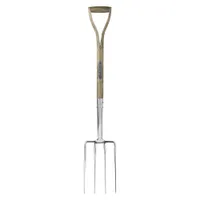How to grow garlic: expert tips for this tasty kitchen staple
Discover all the essentials for growing garlic, including planting and harvesting advice
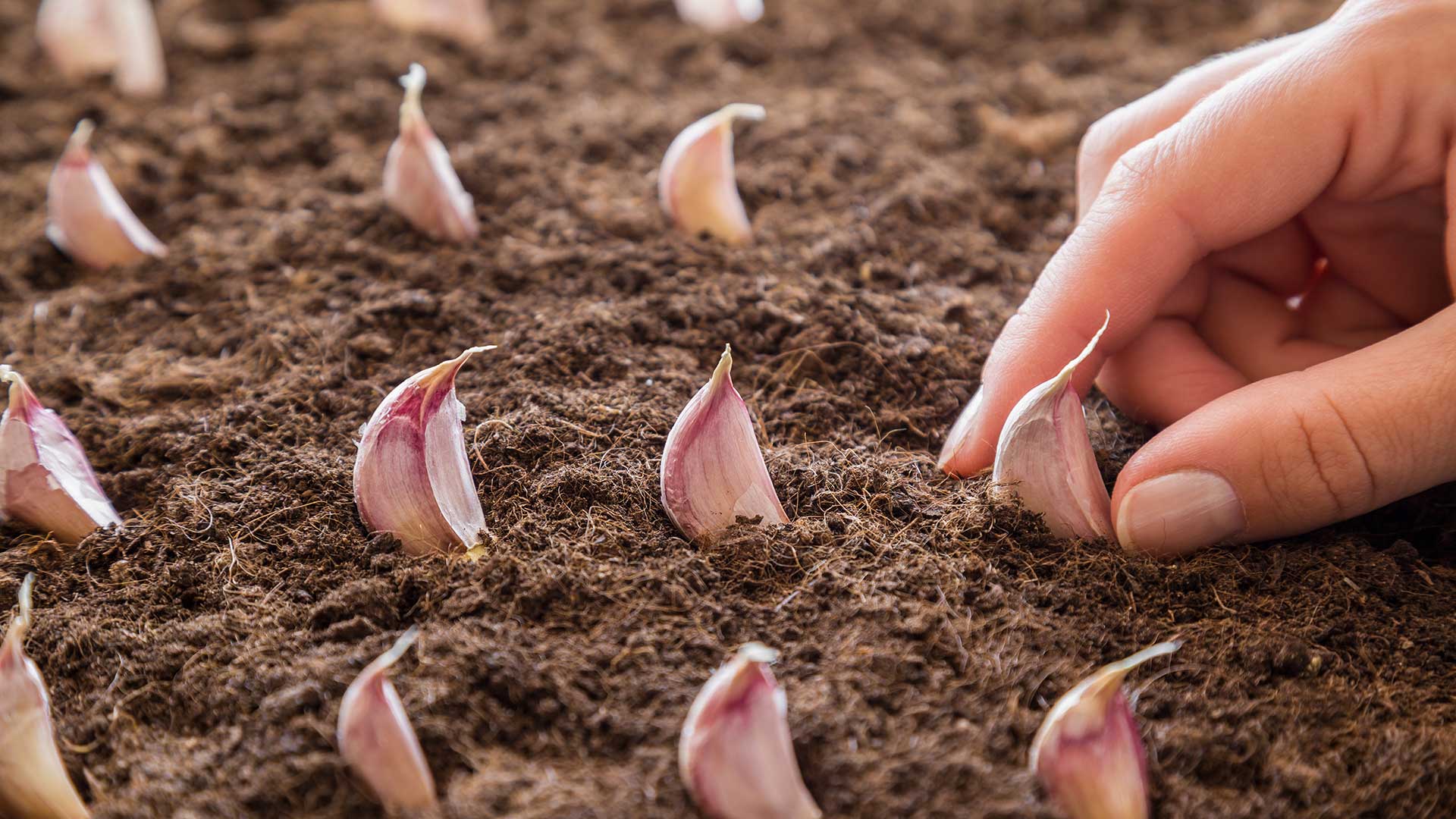

If you're interested in growing your own veggies, learning how to grow garlic is definitely worthwhile. Not only is it easy to plant and care for, but its punchy flavour adds depth to a wide range of dishes, and harvested bulbs can be stored for months.
While growing garlic is a great choice for beginner vegetable gardening, there are a few things to remember to get the best results. For instance, it's important to plant it at the right time of year, in the optimal place. Knowing when and how to harvest it correctly is useful, too.
To help you grow your own delicious crop, we turned to vegetable gardening experts. They share their top tips below, as well as some recommended varieties.
How to grow garlic – the key tips you need to know
Raising your own crops is one of the most rewarding garden trends to try. Growing garlic doesn't require tons of space or hours of maintenance, so why not give it a go?
Where to plant garlic
The first step in learning how to grow garlic is knowing where to plant it.
This crop loves lots of sunshine and freely draining soil, says gardening expert Annelise Brilli. If your soil is on the heavy side, she recommends digging in plenty of organic matter. However, don’t add anything high in nitrogen, such as fresh manure. "Bulbs and high nitrogen don’t mix well, as nitrogen causes fast tissue growth which results in soft bulbs that are prone to rotting, pests and diseases," she explains.
"What you really want is potash, so save your Bonfire night wood ash and dig that in. Alternatively, try a proprietary fertiliser, such as Chempak Organic Onion Fertiliser [available from Suttons]."
Sign up to our free daily email for the latest royal and entertainment news, interesting opinion, expert advice on styling and beauty trends, and no-nonsense guides to the health and wellness questions you want answered.
It's also worth getting rid of weeds and clearing away any stones or other debris from the planting site.
Top tip: You can also plant garlic in modules, Annelise adds; a great solution if your soil is super heavy or you have left bulb planting too late and the ground is frozen. "Just fill module trays with compost, pop a clove into each module, then leave the trays in a coldframe or cold greenhouse until planting them out in spring, by which time they will have already sprouted."

Annelise caught the gardening bug from her mother, whose tiny backyard was crammed with a huge collection of plants. As an adult, she had a career change into horticulture, gaining a training apprenticeship with the National Trust at Powis Castle Garden in Welshpool. She went on to work in a range of private and public gardens, later running a garden design and maintenance business. She is passionate about sustainable gardening and has developed her own wildlife-friendly garden which she has opened as part of Macmillan Coastal Garden Trail.
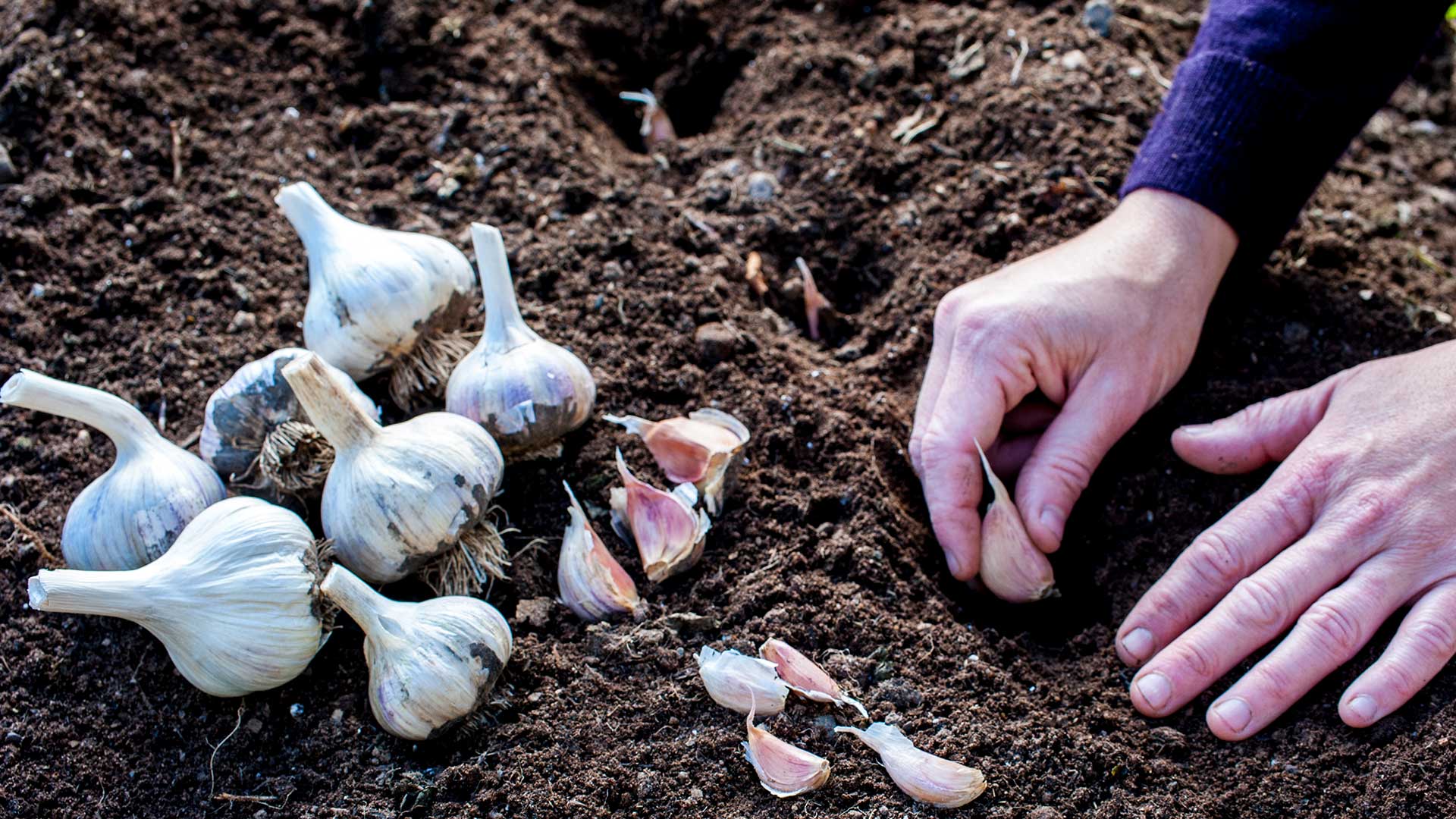
Grow your garlic in a sunny spot
How to plant garlic
To plant, you'll need to separate the bulbs into individual cloves, like you would when cooking, says Hannah Rowson of J. Parker's.
Then, simply push them into the soil with the flat end downwards, instructs Annelise. "Adjust your planting depth according to your soil type, ranging from just 2cm for heavy soils to 5cm for light soils.
"To judge the distance between cloves, use the length of your secateurs as a measuring guide," she continues. "If you are looking to grow champion-bench garlic bulbs then space each clove about one secateur-length apart. For smaller bulbs, space them just half a secateur-length apart."
Top tip: While it's lovely to attract birds to your garden, you don't want them digging up your newly planted garlic cloves. To prevent this from happening, Hannah suggests covering the planted area with horticultural fleece. Alternatively, you could use this tangle-free bird netting from Crocus.

Assistant garden centre manager Hannah Rowson has been with bulb specialist J. Parker's for over eight years. RHS qualified, Hannah is a fountain of knowledge for all things gardening and horticulture, and has even had her garden designs displayed at the RHS Tatton Flower Show.
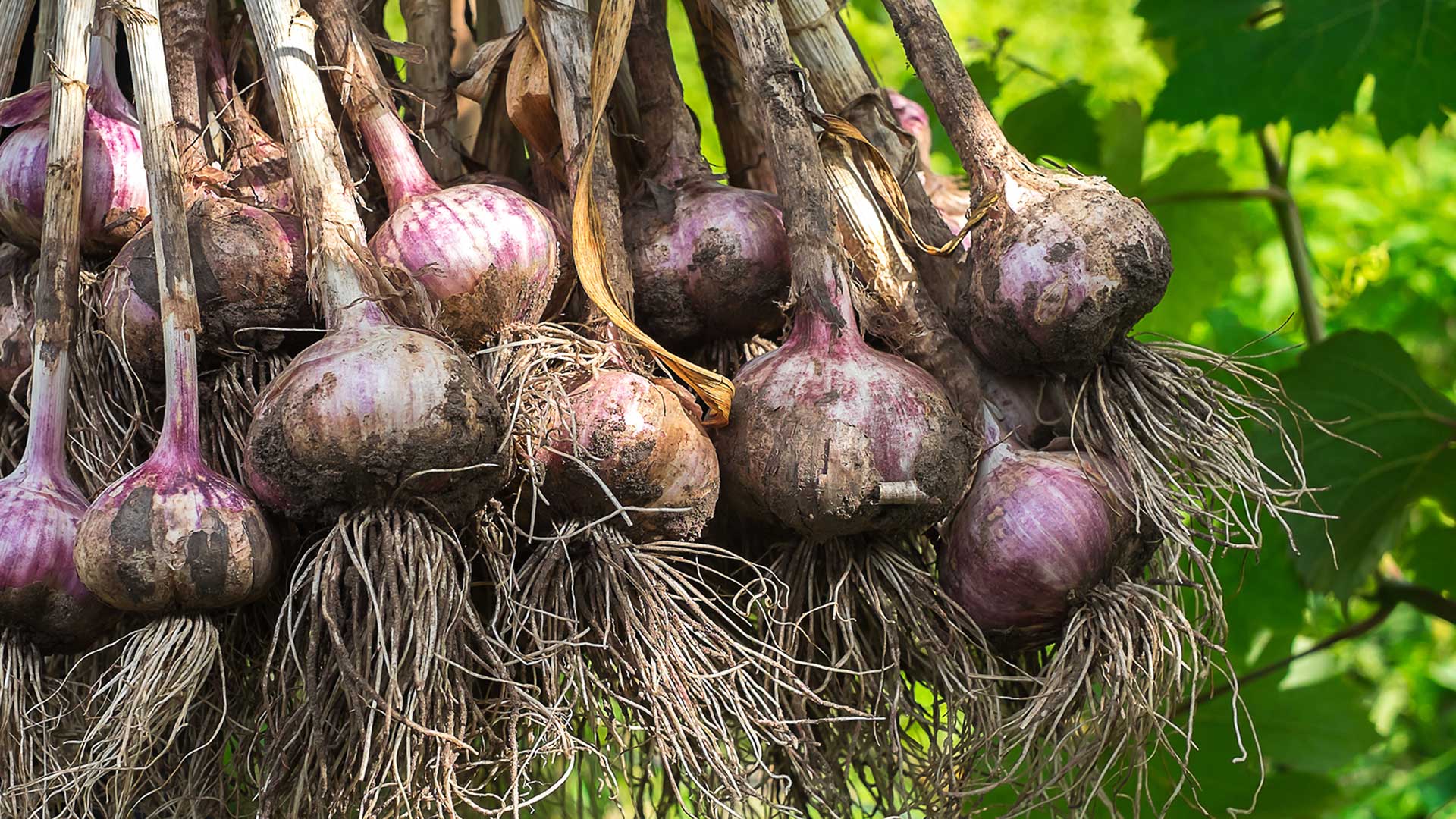
Garlic is an easy crop to grow
When to plant garlic
Like when planting spring bulbs, planting garlic is usually a task to tick off in autumn, as the cold winter temperatures will help them grow well. "The general rule is to make sure they’re planted two weeks before the first frosts," says Hannah.
If you miss the autumn planting window, some varieties can be planted in the spring. Try "Picardy Wight" from Suttons, for instance. However, Annelise notes how she has always found that autumn-planted bulbs grow bigger and better, with superior flavour.
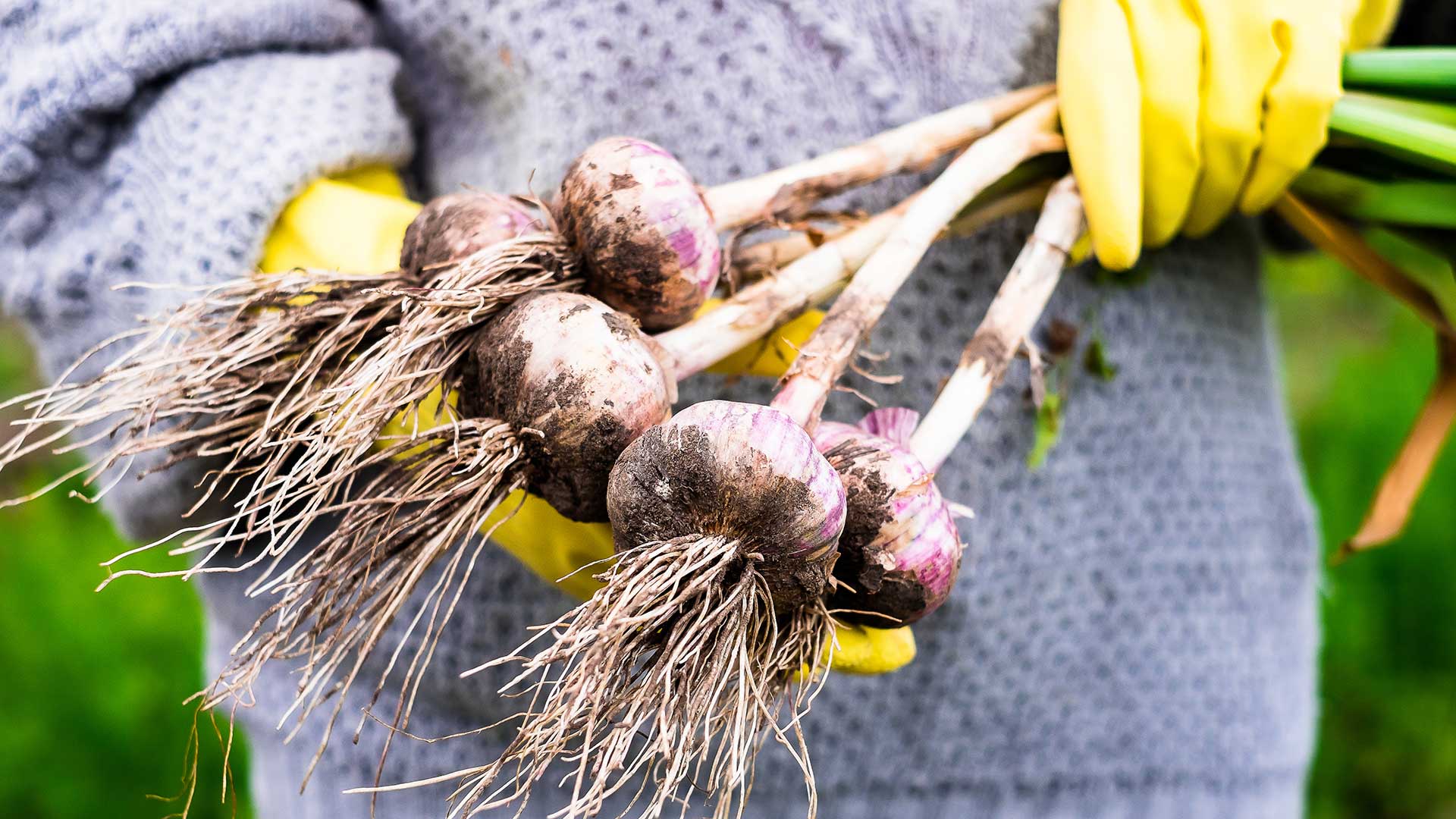
Plant garlic before winter weather sets in
How to care for garlic plants
Once your garlic cloves are planted, there isn't much you need to do. Carefully remove weeds as they appear and water the plants during periods of dry weather (but not when the bulbs are nearing maturity, as this can cause them to rot).
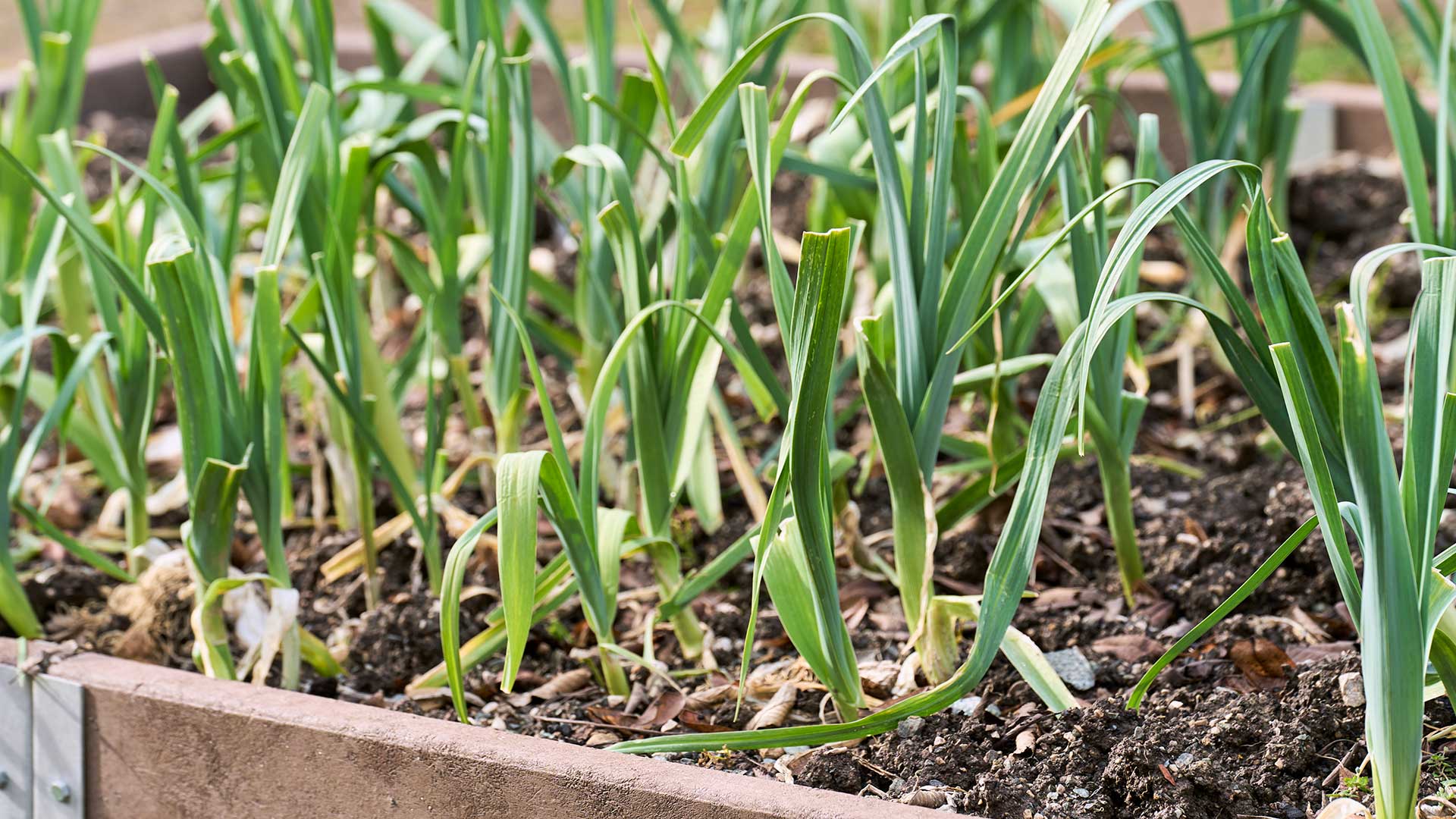
Keep your garlic beds free from weeds to help them grow strongly
When and how to harvest garlic
Garlic will be ready to harvest in the summer. A telltale sign is when the leaves have started turning yellow. If you like, you can also dig one bulb up to check its size, notes Chi Chi Dunford, a head kitchen gardener.
Keep an eye out and harvest your crop quickly when it's ready. "They won’t store as well if left in the ground too long," Hannah warns – a useful gardening tip.
Once carefully lifted from the ground using a garden fork, lay the bulbs out somewhere to dry for a week or so. If the weather is fine and sunny, you can leave them on the ground, says Annelise. Otherwise, place them on racks in the greenhouse.
Then, trim back the roots and store the bulbs somewhere cool and dry, ready for using in the kitchen. The foliage can be plaited together if you wish, for a neat and classic look.
Top tip: Chi Chi says, "There are two types of garlic, hardneck and softneck. Hardneck grows flower stems in early May – these are called scapes which should be harvested (they’re delicious when sauteed!)." Cutting these back is also beneficial as they draw energy away from the bulb, as Annelise points out.
Spear & Jackson Traditional Stainless Steel Digging Fork | RRP: £26.00 at Amazon
This well-rated, rust-resistant fork is an essential gardening tool for all sorts of outdoor jobs, including carefully harvesting garlic bulbs.
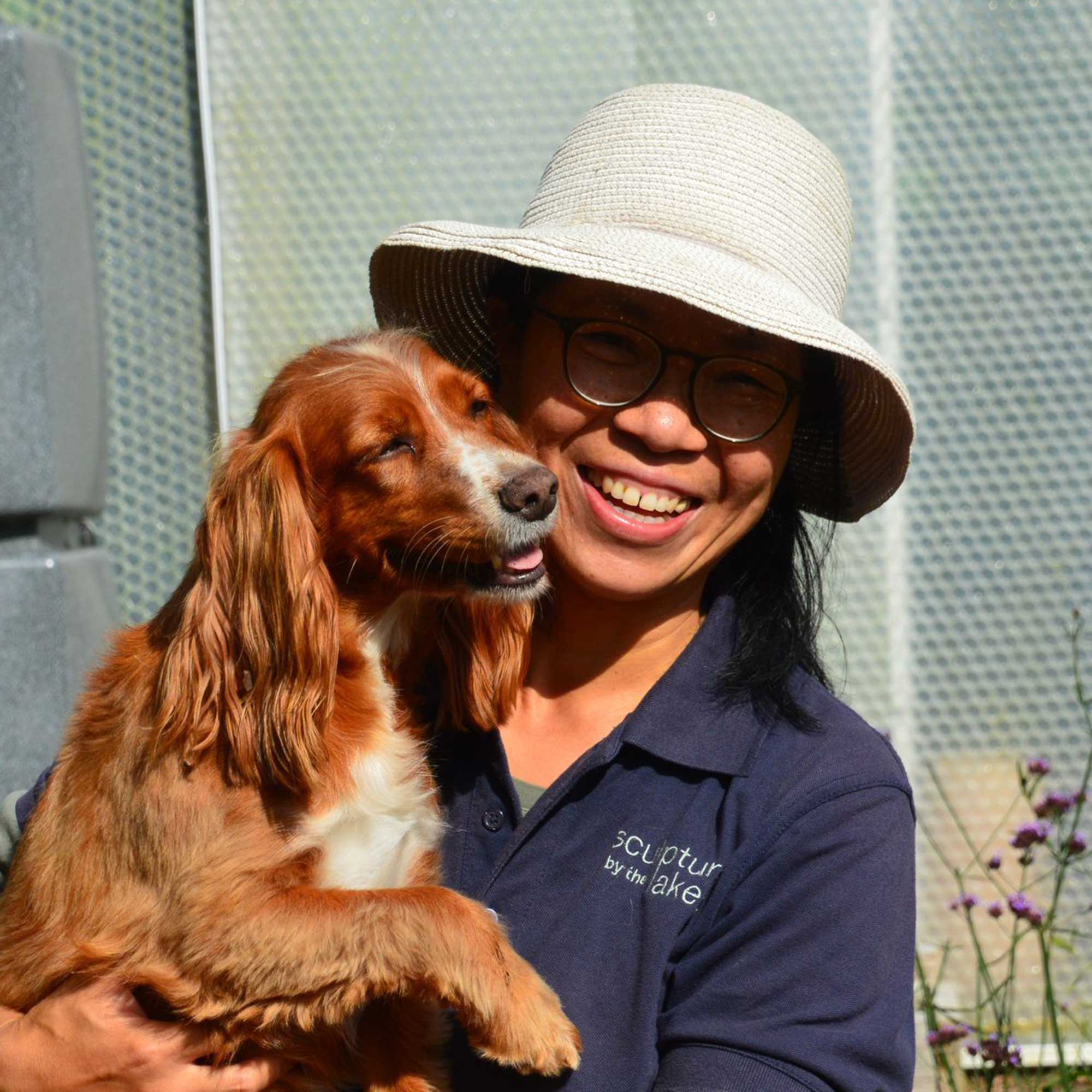
Chi Chi Dunford is the head kitchen gardener at Dorchester’s Sculpture by the Lakes, an internationally accredited botanic garden. Chi Chi joined the team in 2022 and manages the park’s quarter-acre allotment, growing fresh, seasonal produce which is used in the on-site café – the Makers Yard Kitchen. Chi Chi has a bachelor’s degree in Forestry and Resource Conservation from National Taiwan University. She was also trained as a biodynamic gardener in 2008 and is currently taking an RHS level 3 diploma.
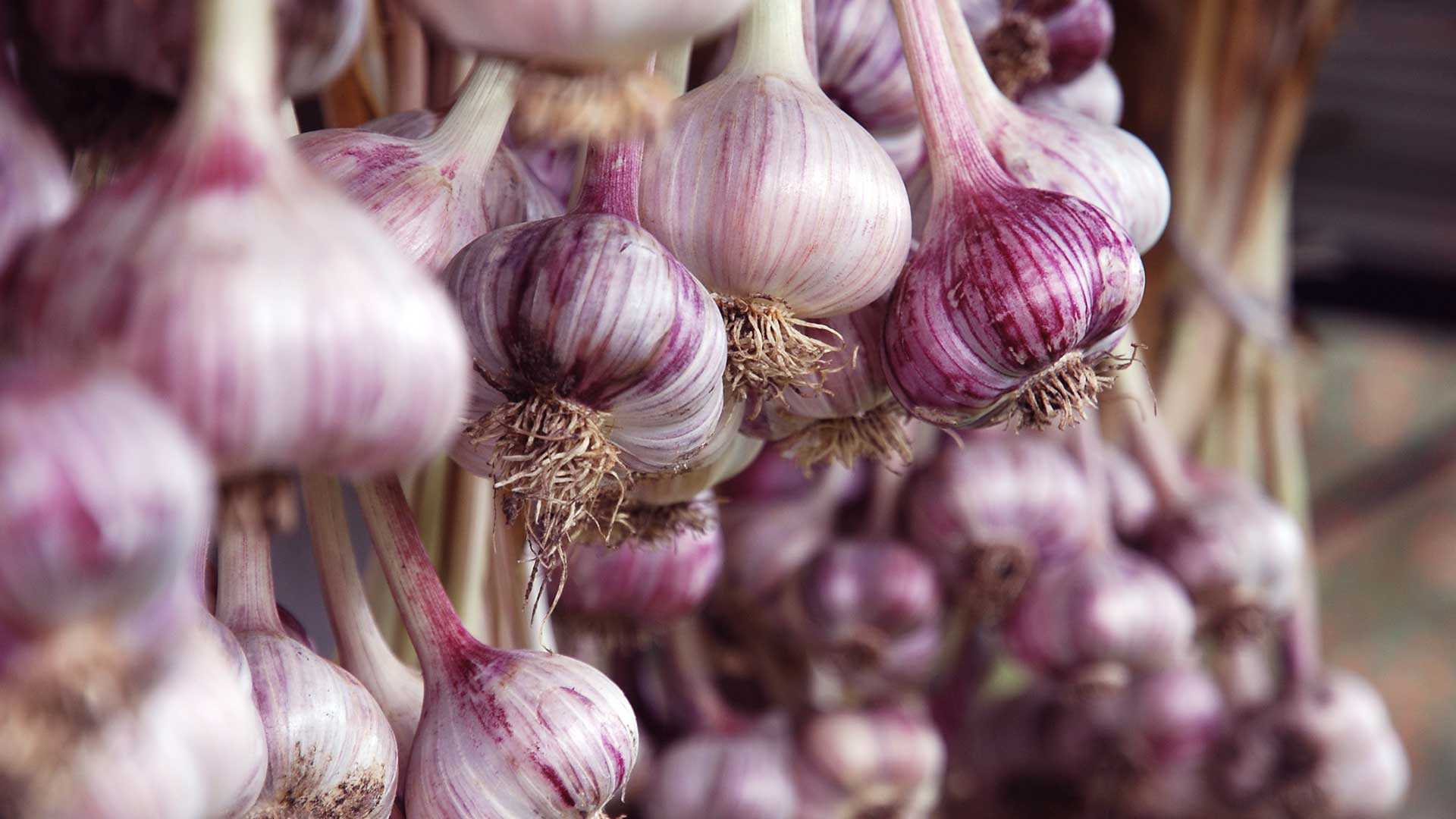
Stored garlic can last for many months
FAQs
What are some recommended varieties of garlic to grow?
"Hardneck varieties are stronger flavoured, have fatter cloves, and are hardier, but have a shorter storage life," says Annelise. "Softneck varieties are milder flavoured and not quite as hardy, but have incredibly long storage properties and are perfect for braiding."
Chi Chi's favourite hardneck variety of garlic is "Carcassonne Wight", which you can buy from Suttons. "It’s ideal for growing in UK climate conditions," she says. Annelise also recommends this variety, adding how it has lovely pink cloves.
For a softneck type of garlic, Chi Chi recommends "Solent Wight" (available from Crocus) for its great taste. Meanwhile, Claire Hooper of Hillier Garden Centre Winchester recommends "Early Purple Wight", known for its strong flavour and high yield. "This variety can be ready as early as mid-May, making it a great option for those looking to enjoy fresh garlic sooner," she says. However, it’s best to use the bulbs within three months of harvest, she adds.
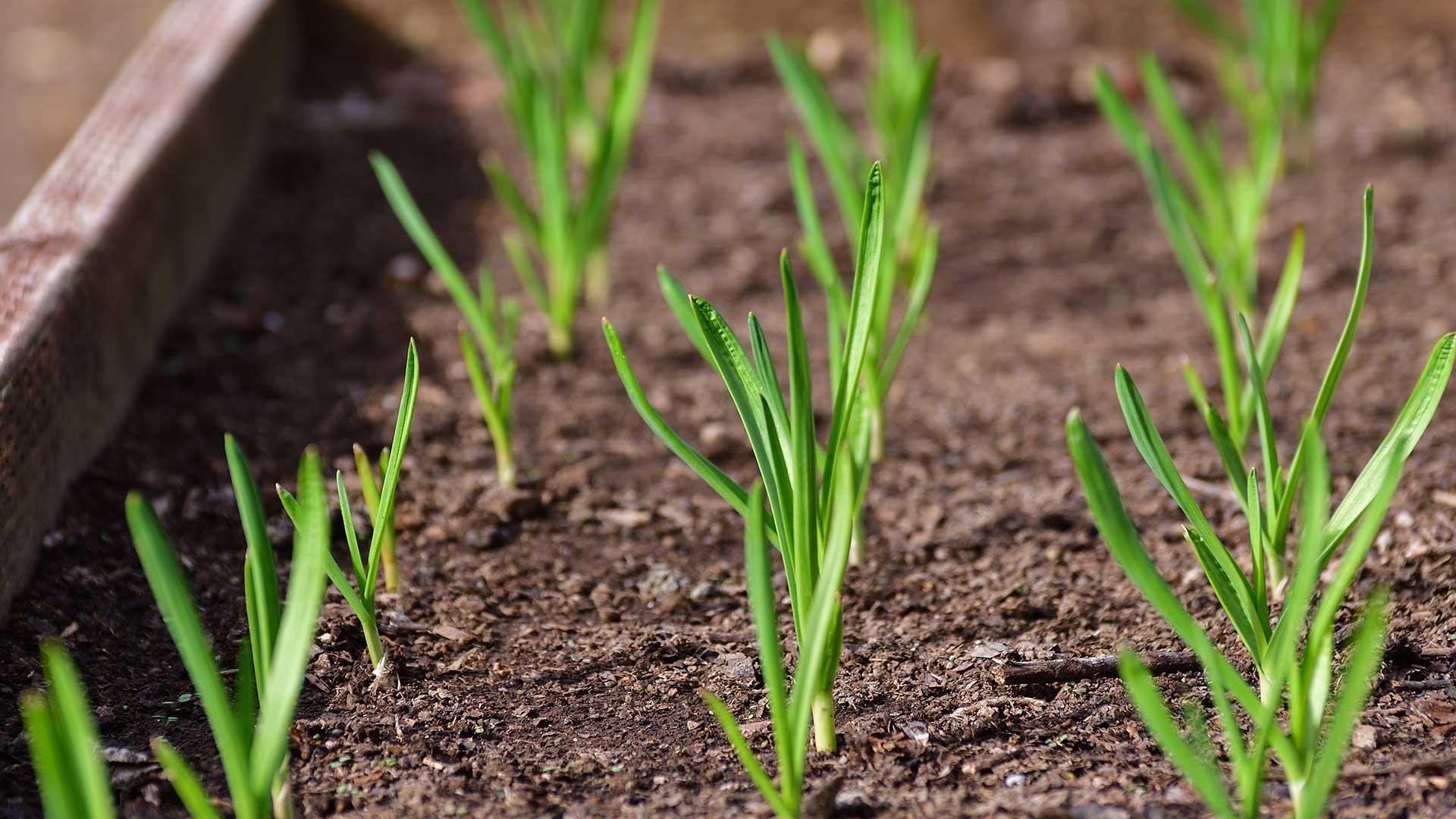
Choose between hardneck and softneck varieties – or plant a mixture of both
Can you grow garlic in pots?
If you have a small garden without much planting space, try growing these veggies in a large, deep pot. "You can easily grow garlic in a container," says Chi Chi. "To do this, choose a pot at least 30cm wide for growing six garlic cloves (which will grow into six garlic bulbs)."
Like all patio container plants, remember to water your potted garlic when needed – they'll dry out quicker than those planted in the ground.
"It is important to expose your potted bulbs to cold but without the whole pot becoming frozen solid during severe winter weather," adds Annelise. "Remember that potted plants are much more vulnerable to frost damage than plants in the open ground, which are insulated by the surrounding soil." She advises placing your garlic pots in a cold frame or cold greenhouse, with some fleece or bubblewrap handy in case you need to protect the plants during severe frosts.
Looking for more tips for growing your own harvests? Now you know how to grow garlic, why not take a look at our guides on when to prune tomato plants and how to grow herbs indoors, which are full of practical advice.

The garden was always a big part of Holly's life growing up, as was the surrounding New Forest where she lived. Her appreciation for the great outdoors has only grown since then; she's been an allotment keeper, a professional gardener, and a botanical illustrator. Over three years ago, Holly started writing about plants and outdoor living full-time, first for Gardeningetc.com and now for popular lifestyle titles such as Homes & Gardens.
